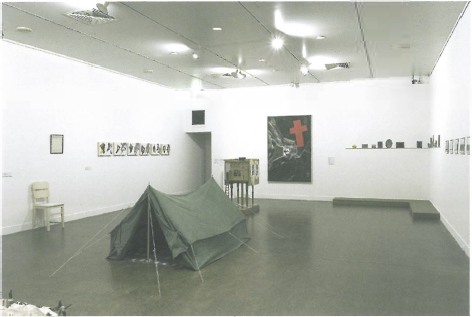
The issue of artist-run spaces has frequently appeared in Artlink throughout its history as part of the magazine's general pro-practitioner, pro-innovation, pro-self-development outlook. Therefore it is important to mark Monash University's excellent exhibition Pitch Your Own Tent, an overview of the activities of certain selected ARIs in Melbourne. It is not a complete survey of ARIs in Melbourne and in the selectivity certain conceptual problems arise – although these problems also engage with the narrowness and nepotism that often hinders the experience of professional art in Australia, and the ability of one group or elite to substantially dominate the field at any given time. In the context of evaluating ARIs, Andrew Hurle''s photo essay on 77 defunct artist-run galleries in Melbourne and Sydney provides a broader context and consideration to what is a fixed base of exploration. The temporality of the ARI is, of course, not only a question of lack of support but also of the interactive nature of the ARI responding to current debate and also reflecting conditions of the experience of art practice, that themselves are susceptible to change. The essay also reiterates my own ideas about the importance of the presence of artists to understanding and enriching the Australian experience of the inner suburban architectural fabric and visualisation of the possibilities of urban space and life.
Credit is due on all possible fronts in relation to the project. The concept worked and is realised in the exhibition presentation. The overall layout was simple with each of the galleries representing one space. The quality of work shown is tangible and meaningful and it allows the viewer to grasp a structure and a set of paradigms through which to view the last three decades of artmaking in Melbourne. Exhibits move from artists now regarded as established and senior such as Imants Tillers, Mike Parr, Ti Parks, Jenny Watson, Peter Cripps to a younger generation such as Kate Benyon.
The underlying assertion that the ARI emerged in relation to the shift towards discourse based conceptual art, that needed a space to present the exhibition as an exposition or exegesis, is persuasive and well supported by the exhibition. The catalogue is excellent and informative and will have a long life as reference material. Writers and selection of images have a sense of being spot on in terms of being informed witnesses to the events. The chosen spaces – Art Projects, Store 5, and 1st Floor – have all exerted a particular and tangible influence on artmaking in Melbourne. A question that threads through the exhibition is the issue of communication. In looking backwards, one can see how linkages and promotions of artists that seemed to an outsider extremely arbitrary had their basis in associations formed through membership of the ARI. Cameron Morton, Rose Nolan and Constanze Zikos, for example, were amongst the Store 5 groups. That I was not on the rather closed guest list for Store 5 and also due to the often fleeting nature of events presented in the space, artists who seemed to me to spring from nowhere to being shown and acquired wall to wall were already regulars at almost private events at this particular ARI. In relation to acquisition, policies by curators at the three selected ARIs have also proved highly influential in retrospect. I found the movement to a relative loosening of the networks of inclusion and publicity from Art Projects to First Floor where there is a far lesser sense of the artist as set on a mission and a parallel diversification of the definition of what is practice.












